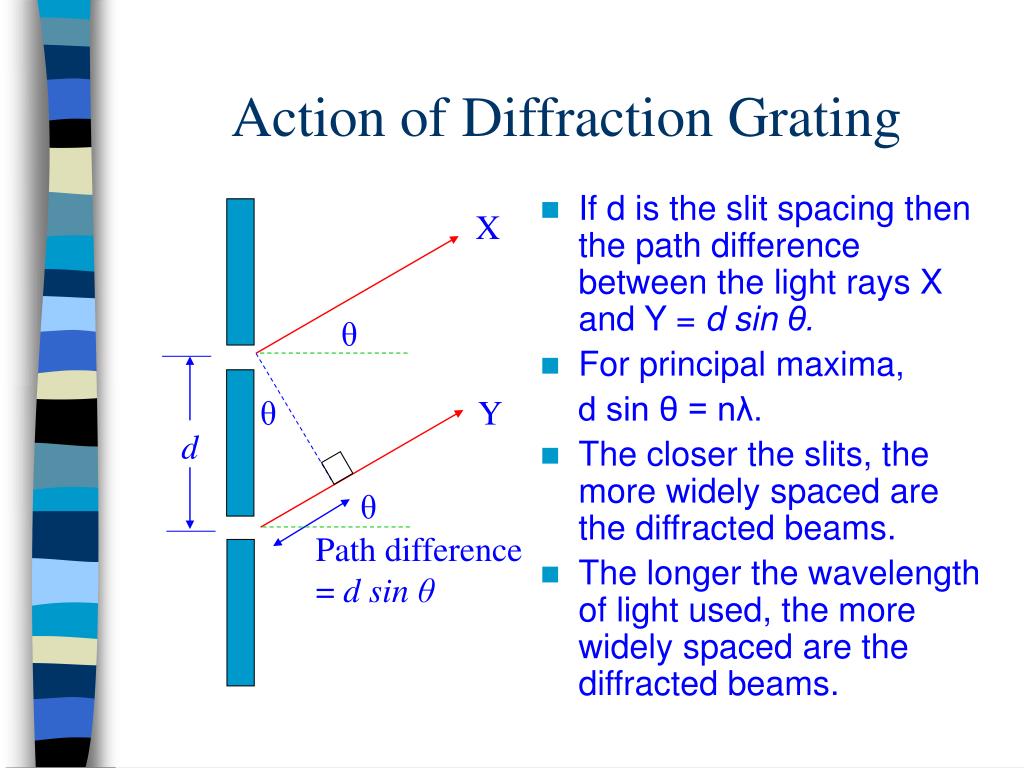


Consistency of simulation and experiment results are proved and analyzed. The diffraction equation is w x sin m x, where w is the slit width, is the wavelength, m is the order of the intensity minima (+/-1, +/-2, +/-3, etc.), and is the position angle of. Two crucial parameters, peak transmission and finesse describing brightness and sharpness of fringes, are defined and investigated, whose results reveal that fringe shape of multiple-beam grating interferometry is determined by amplitude coefficients of two surfaces forming the cavity and could be explained by multiple beam interference with intensity loss. m is an integer value describing the diffraction (or spectral) order, is the lights wavelength, d is the spacing between grooves on the grating, is the. Calculated from grating equation, the +1st-order Littrow angle is 22.3°. Based on multi-beam interference and grating interferometry, mathematical derivation reveals that the fringes of the multi-beam grating interferometry follow a general form of Airy formulae, while the period of which is additively determined by phases from grating pitches and laser wavelength. Establishment of the multiple-beam interferometry based on diffraction grating. The central maximum is white, and the higher-order maxima disperse white light into a rainbow of colors. (b) The pattern obtained for white light incident on a grating. Multiple-beam grating interferometry, a hybrid of the multiple-beam interference and grating interferometry, is introduced and conducted by building a Littrow-type cavity with a diffraction grating. The diffractions equation is: m a sin m Where: m: The order number of the diffracted image, m1,2,3. This binary prole is an equally good approx-imation of an ideal blaze in the opposite direction, so it follows that this grating is also 40.5 efcient in the 1 diffraction order. Figure 4.14 (a) Light passing through a diffraction grating is diffracted in a pattern similar to a double slit, with bright regions at various angles.


 0 kommentar(er)
0 kommentar(er)
